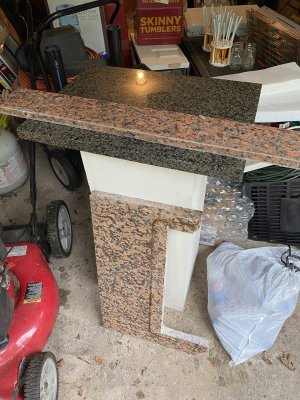- Joined
- Dec 27, 2014
- Messages
- 4,056
While gainfully employed I had access to an (approximately) four by five foot black granite surface plate. Tool room quality. It was flat, no question, my Kitchen Counter Granite will do for my projects. Absolute accuracy is great, but it's cost is not returned in my projects, no revenue from them, just pleasure of work.


